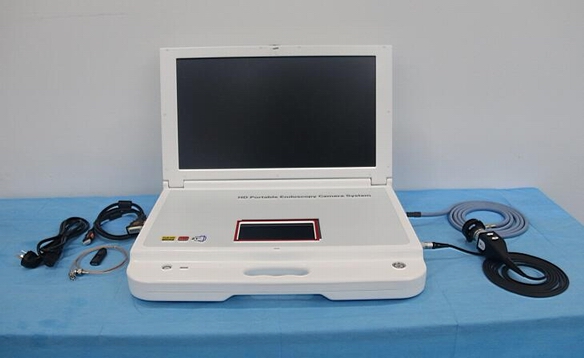Portable Arthroscopy Camera System: Benefits and Applications
Arthroscopy is a minimally invasive surgical procedure that involves the insertion of a small camera into a joint through a small incision. The camera provides a clear view of the joint, enabling the surgeon to diagnose and treat various joint conditions. To perform arthroscopy, a high-quality camera system is required to ensure that the images captured are clear and accurate. In recent years, there has been a growing demand for portable arthroscopy camera systems that are more compact and lightweight than traditional camera systems. This essay will explore the benefits and applications of portable arthroscopy camera systems.

A portable arthroscopy camera system is a compact and lightweight camera system designed specifically for arthroscopy procedures. It typically consists of a camera head, a cable, a light source, and a monitor. The camera head is small and flexible, allowing it to be inserted into the joint through a small incision. The cable connects the camera head to the monitor, and the light source illuminates the joint, ensuring that the camera captures clear images.
One of the main benefits of a portable arthroscopy camera system is its portability. Traditional camera systems are large and bulky, making them difficult to transport between operating rooms or to remote locations. A portable arthroscopy camera system, on the other hand, can be easily transported in a carrying case or backpack, making it ideal for use in remote locations or in emergency situations. The portability of a portable arthroscopy camera system also makes it easier for surgeons to switch between different procedures, as they can quickly move the camera system between operating rooms.
Another benefit of a portable arthroscopy camera system is its ease of use. Traditional camera systems require a complex setup process, which can be time-consuming and confusing for inexperienced users. A portable arthroscopy camera system, on the other hand, is designed to be simple and intuitive to use. The camera head can be easily inserted into the joint, and the image can be viewed on the monitor in real-time. This simplicity makes it easier for surgeons to focus on the procedure, rather than the camera system.
Portable arthroscopy camera systems have a wide range of applications. They are commonly used in orthopedic surgery to diagnose and treat joint conditions such as torn ligaments, cartilage damage, and arthritis. They are also used in sports medicine to evaluate injuries and to monitor the healing process. In addition, portable arthroscopy camera systems are used in veterinary medicine to diagnose and treat joint conditions in animals.
In conclusion, portable arthroscopy camera systems offer many benefits over traditional camera systems, including portability, ease of use, and versatility. They are ideal for use in remote locations, emergency situations, and in surgeries where portability and ease of use are important. Portable arthroscopy camera systems are a valuable tool for surgeons and medical professionals in the diagnosis and treatment of joint conditions, and they are likely to become more common in the future as technology continues to advance.



Leave a message